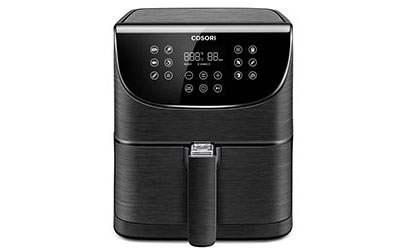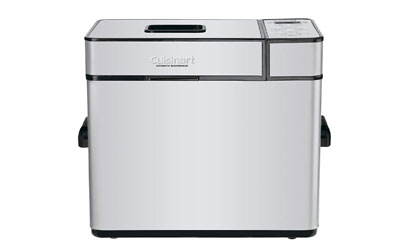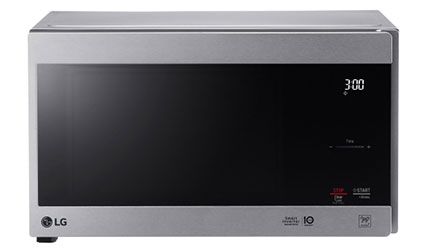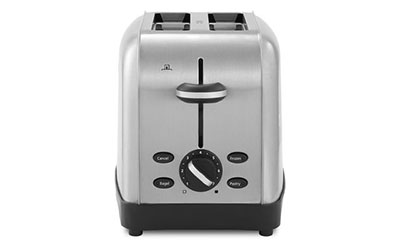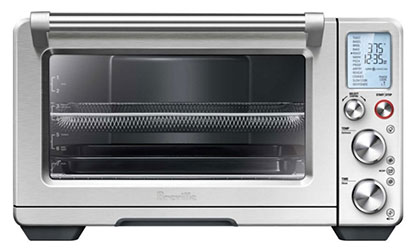Even in the age of cooking apps and Pinterest boards, many home cooks find themselves returning to physical recipe books. They’re easy to flip through while your hands are covered in flour, they can be customized to your needs, and they don’t rely on Wi-Fi. More importantly, a physical recipe book can become a family heirloom filled with personal notes and memories.
Digital tools are helpful, but the tactile quality of a recipe book encourages consistency. You’re more likely to stick with a cooking plan when you have a system that feels natural, easy, and enjoyable to use.
In this article, we’ll look at some of the best recipe book ideas, both traditional and creative, that help you stay organized in the kitchen.
1. Personalized Recipe Journals
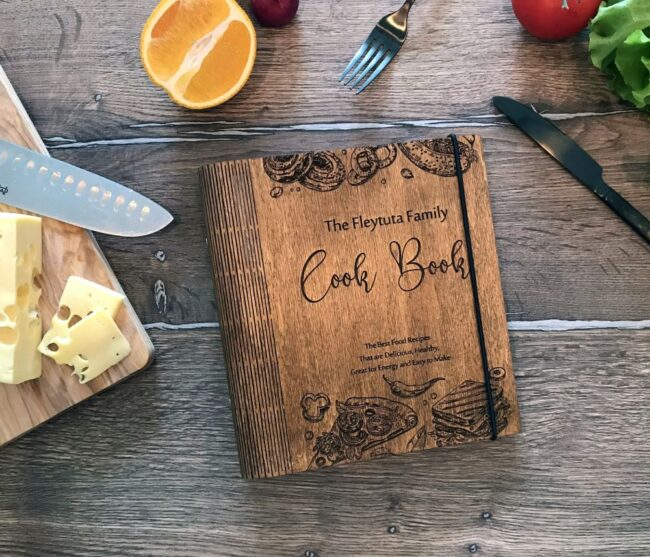
One of the simplest yet most effective ideas is a personalized recipe journal. These journals typically come with blank pages, dividers, or prompts where you can write down ingredients, steps, and tips in your own words.
To make these journals more practical, many cooks now use accessories like a reusable sticker book. With reusable stickers, you can label sections by cuisine type, mark favorite dishes, or add cooking reminders. Unlike permanent markers or sticky notes that lose their grip, reusable stickers make it easy to adjust and reorganize as your collection grows.
This approach creates flexibility, so your recipe book evolves with your cooking habits instead of being locked into one structure.
2. Binder-Style Recipe Books

Binders are a practical choice for those who like structure but need flexibility. With a three-ring binder and clear plastic sleeves, you can print recipes, slide them in, and rearrange them whenever needed.
Benefits of binder-style books include:
- Easy to add or remove recipes at any time
- Protection from spills with plastic sleeves
- Ability to create sections such as “Weeknight Dinners,” “Baking,” or “Holiday Meals”
- Room for handwritten notes alongside printed recipes
This option works especially well for people who collect recipes from multiple sources, such as cookbooks, websites, or handwritten cards.
3. Themed Recipe Collections
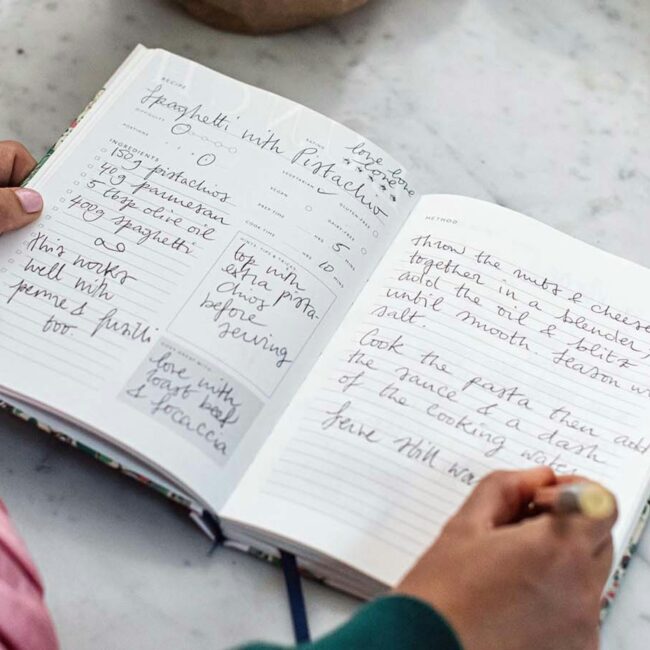
Instead of keeping every recipe in one place, consider creating themed recipe books. For example, you could dedicate one book to quick weekday meals, another to desserts, and another to international cuisines you’re trying out.
Themed collections help reduce overwhelm. When you’re in the mood to bake, you don’t need to sift through soup recipes. You go straight to your dessert book. Over time, these themed books also act as curated guides tailored specifically to your family’s taste.
4. Digital-Print Hybrid Recipe Books
Some cooks love the convenience of digital tools but still want the feel of flipping pages. Hybrid recipe books strike that balance. You gather recipes digitally, format them in a clean design, and then print them as a bound book or insert them into a binder.
With this method, you can:
- Standardize fonts and layouts for easier reading
- Add family photos or cooking notes
- Reprint updated versions as your collection grows
Hybrid books make excellent gifts, too. Imagine handing a newlywed couple a custom-printed recipe book with your family’s traditional dishes.
5. Recipe Card Boxes with a Modern Twist
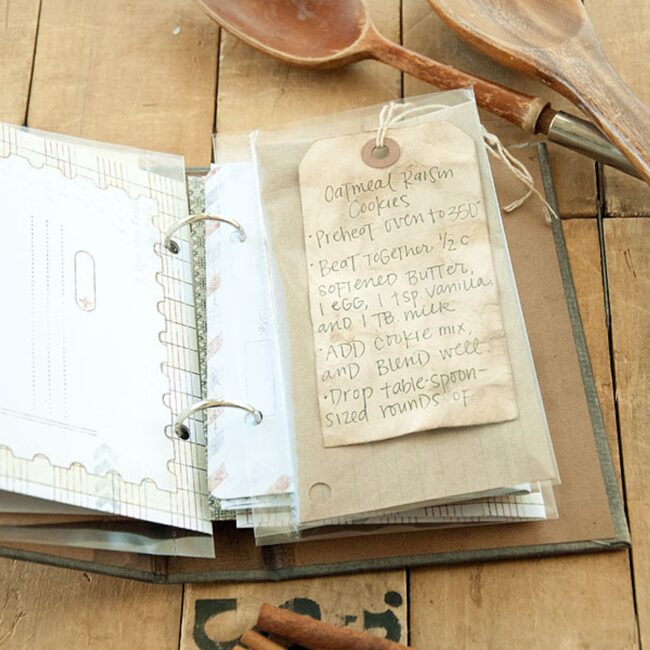
Recipe card boxes may feel old-fashioned, but they remain one of the most functional solutions for kitchen organization. Each card contains one recipe, which makes flipping through and pulling out a single dish incredibly efficient.
To modernize the idea, you can:
- Use color-coded dividers for categories
- Laminate cards for durability
- Add QR codes that link to videos or expanded online versions of recipes
This mix of tactile and tech elements brings recipe card boxes into the modern kitchen.
6. Wall-Mounted Recipe Boards
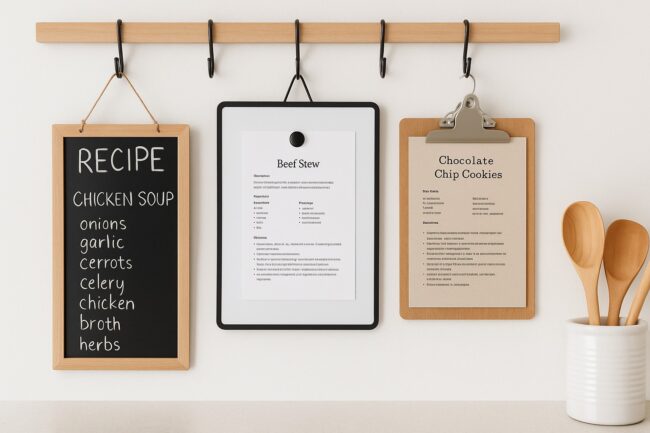
If you like keeping recipes visible while you cook, wall-mounted boards are a clever solution. You can use chalkboards, magnetic boards, or clipboards arranged on the wall. Write out the recipe of the day or pin up a printed version where you can see it without juggling papers on the counter.
This method works especially well for families that meal prep together. Kids or partners can glance at the board and know what’s on the menu, making cooking a more collaborative effort.
7. Family Heirloom Recipe Scrapbooks
For those who value sentiment as much as practicality, a scrapbook-style recipe book can hold not just cooking instructions but also family history. Pair handwritten recipes with photos, anecdotes, and stories about when the dish was typically served.
Scrapbook recipe books create a legacy. They’re not just tools for cooking, but personal archives of family traditions. Years later, flipping through them will feel like reliving memories around the table.
8. Meal-Planning Recipe Books
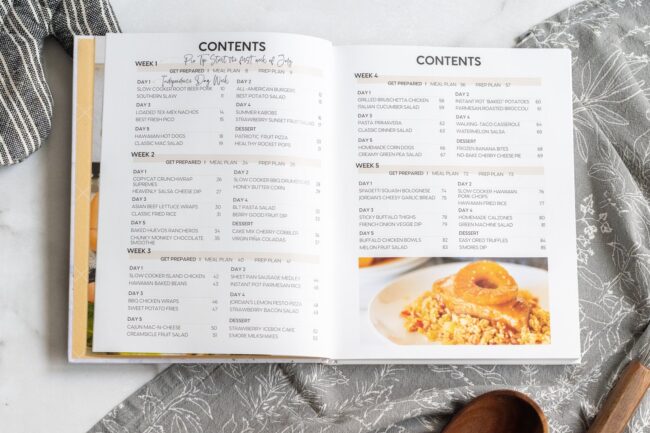
Some recipe books go beyond storing recipes—they help you plan. These books combine recipe pages with calendar layouts, shopping lists, and meal prep tips.
Key features might include:
- Weekly or monthly meal planning pages
- Grocery checklist sections
- Space for rating recipes based on how well they worked for your family
This kind of book helps streamline both cooking and shopping, reducing last-minute stress and food waste.
9. Using Technology Alongside Recipe Books
Even if you prefer physical books, pairing them with digital apps can make your system stronger. For instance, you can scan handwritten recipes and save them online for backup. Some cooks use recipe organization apps to store everything digitally, then print favorites into a physical book for daily use.
This dual system ensures you never lose a recipe while still enjoying the tactile comfort of flipping through pages.
Final Thoughts
Staying organized in the kitchen doesn’t mean forcing yourself into one rigid system. The best recipe book ideas are the ones that fit your lifestyle, whether that’s a personalized journal with reusable stickers, a binder you can endlessly expand, or a scrapbook that doubles as a family treasure.
The key is consistency. Once you choose a format that feels natural, maintaining it becomes second nature. Over time, you’ll not only cook more efficiently but also create a collection that reflects your taste, your family, and your kitchen journey.

